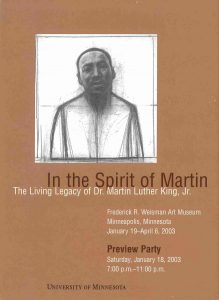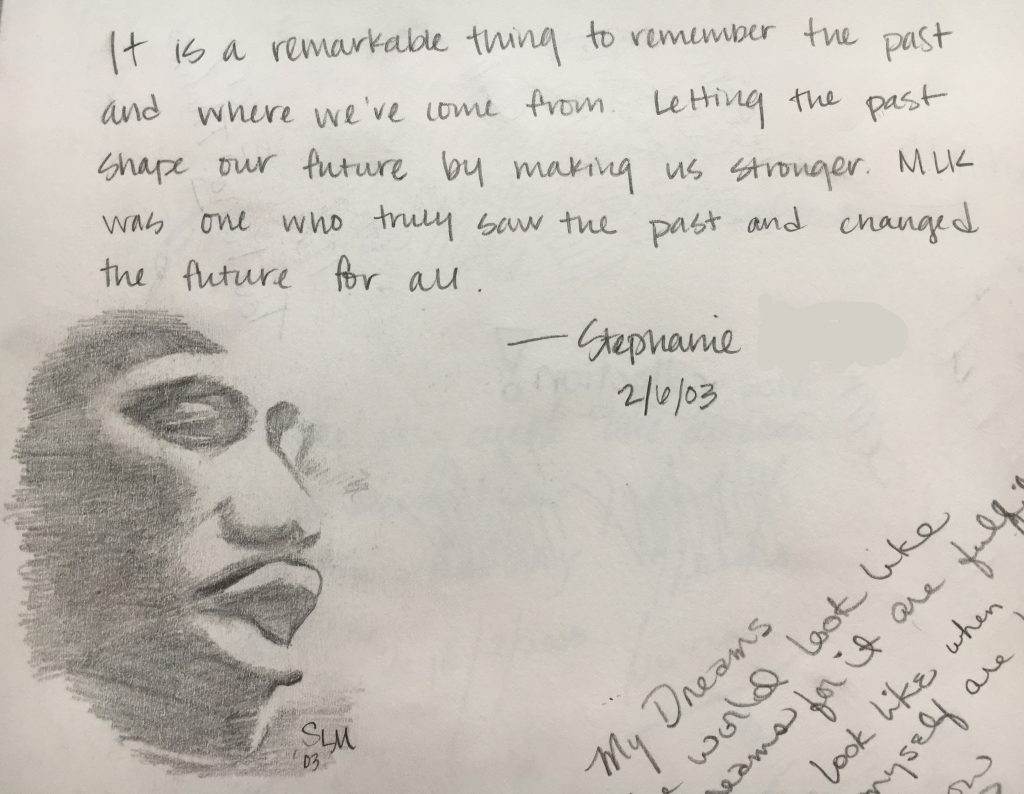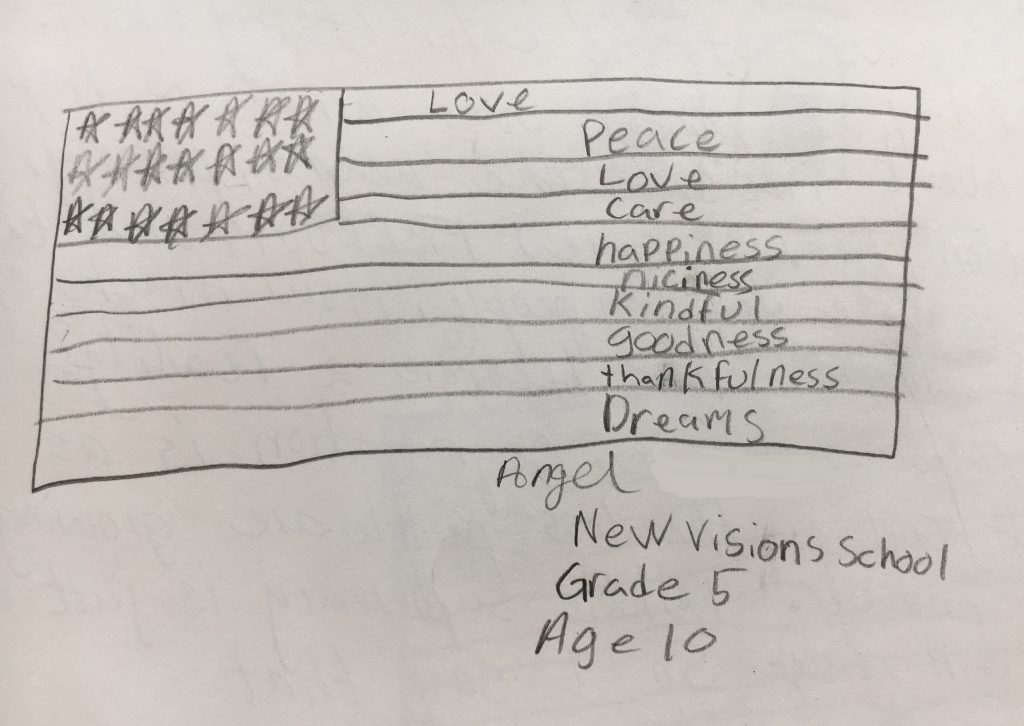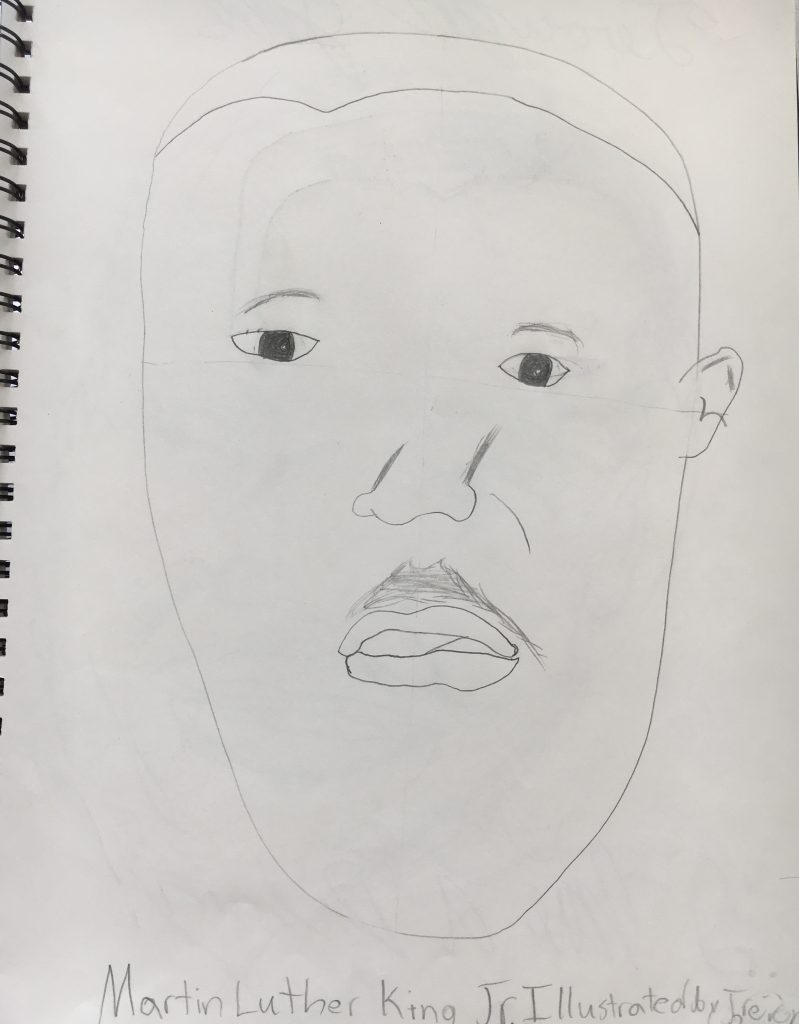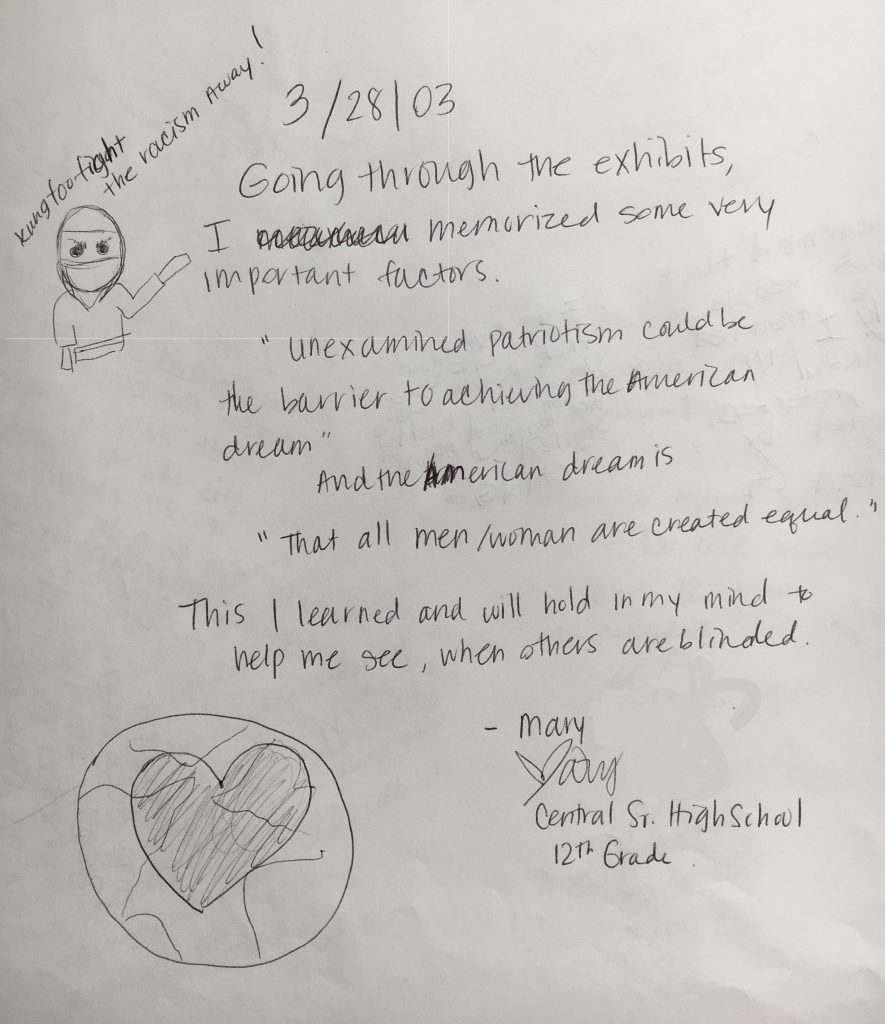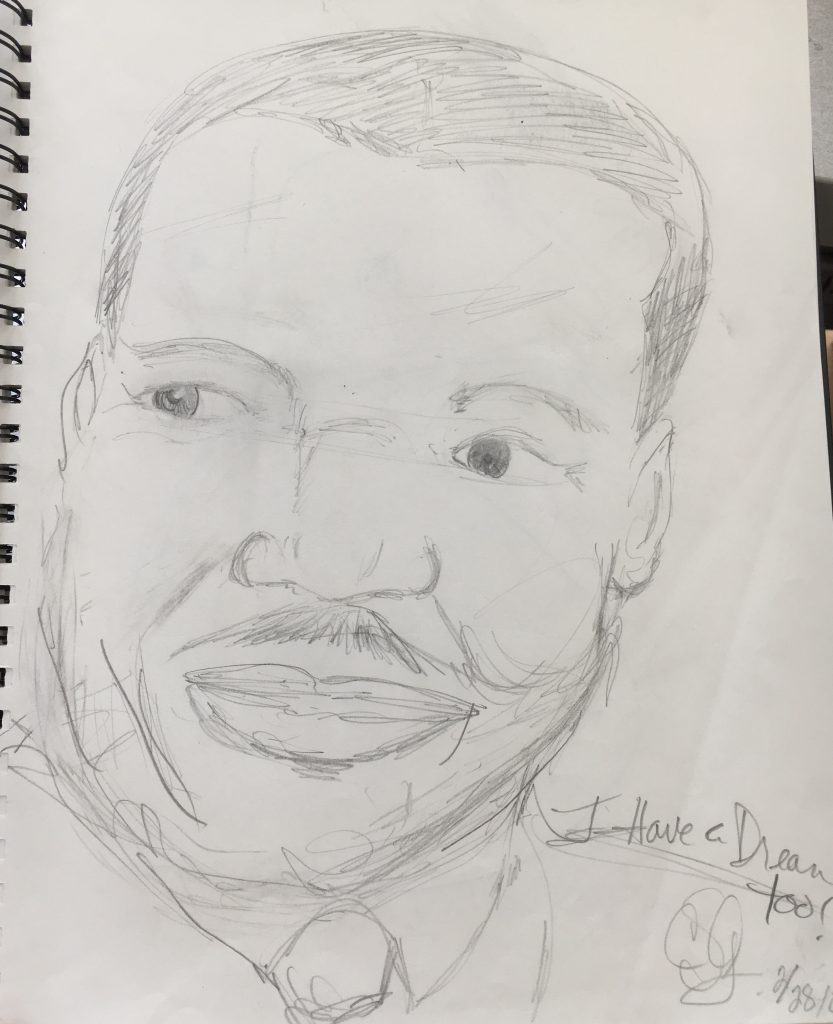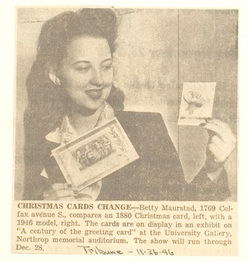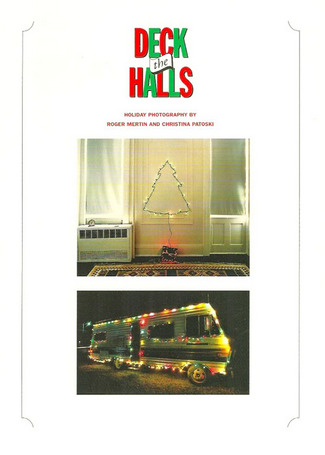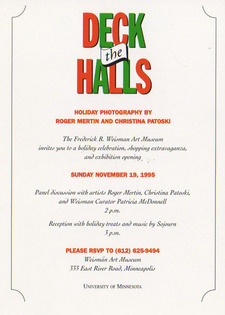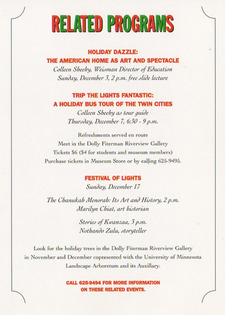Fifteen years ago this weekend, the anticipated exhibition In the Spirit of Martin: The Living Legacy of Dr. Martin Luther King, Jr. opened at the Weisman Art Museum with a full schedule of events. The purpose of the exhibition is clearly stated in the invitational brochure: “By juxtaposing accounts in Dr. King’s life with visual renderings of those events, In the Spirit of Martin speaks to the power of art to shape collective national memory.”
Although the exhibition was assembled by an outside curator, the local planning committee was comprised of over 38 individuals. Events associated with the exhibition included a preview party, choral performance, a community tribute to john powell, founder of the Institute on Race and Poverty, a talk with MLK’s friend and Pulitzer prize-winning author Roger Wilkins, Special MLK Day programs, Minneapolis Urban League’s documentary screening and a lecture by renowned artist Faith Ringold titled Art, Activism, and African-American Experience.
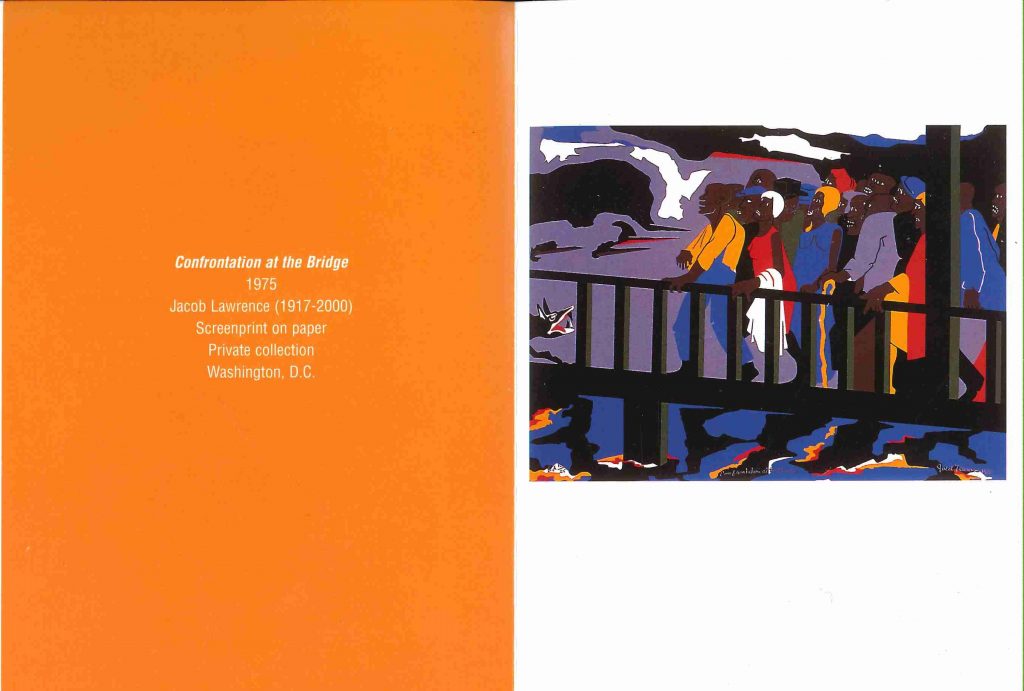
“Confrontation at the Bridge” by Jacob Lawrence, 1975. Included in WAM’s invitational brochure for the exhibition “In the Spirit of Martin”.
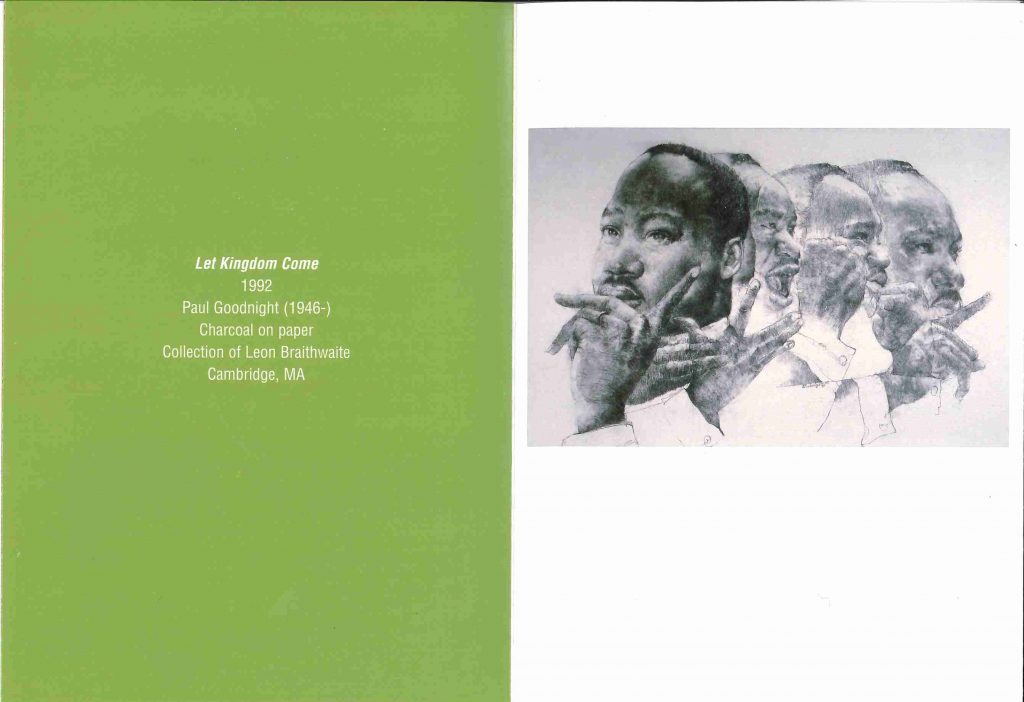
“Let Kingdom Come” by Paul Goodnight, 1992. Included in WAM’s invitational brochure for the exhibition “In the Spirit of Martin”.
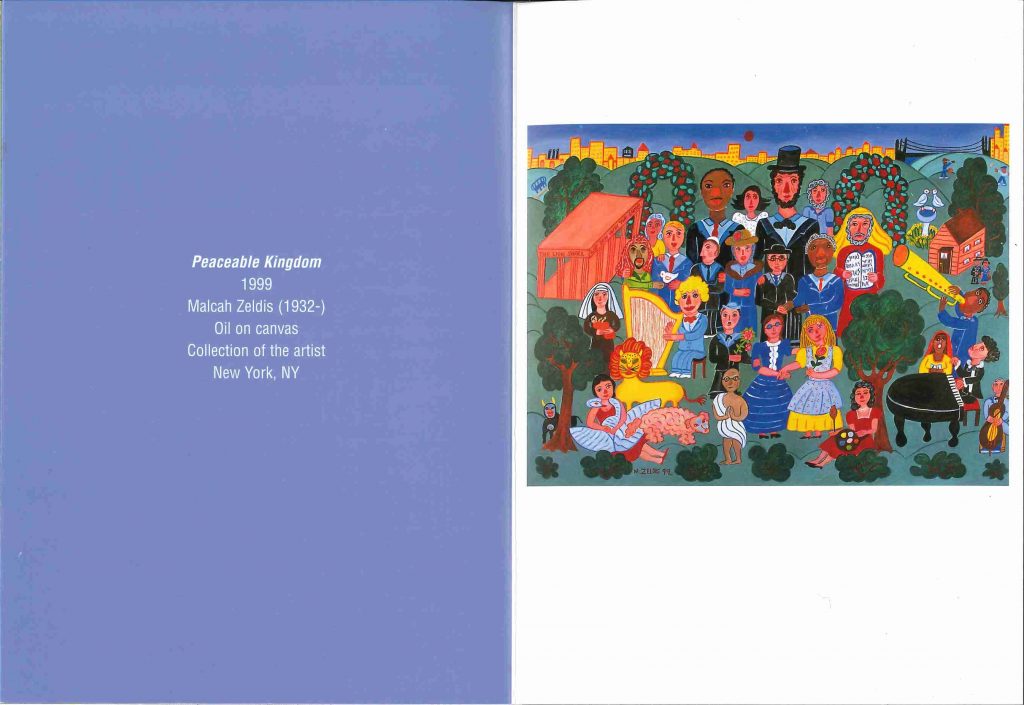
“Peaceable Kingdon” by Malcah Zeldis, 1999. Included in WAM’s invitational brochure for the exhibition “In the Spirit of Martin”.
“In the Spirit of Martin was the first major museum exhibition to use the visual arts to explore the inspiring life and enduring legacy of Dr. Martin Luther King, Jr. Civil Rights leader, statesman, minister, and martyr, Martin Luther King is one of the most compelling figures in American history. An overview of the Civil Rights movement set the stage for the exhibition’s impressive range of artistic offerings. In the Spirit of Martin included paintings, works on paper, prints, sculpture, and mixed-media pieces by such artists as Elizabeth Catlett, Thornton Dial, L’Merchie Frazier, Jacob Lawrence, May Stevens, Charles White, and John Wilson. Some of the artworks cast Dr. King as a martyr and comment on violence in American society. These images convey the tremendous sense of outrage and loss caused by Dr. King’s death. Others examine his status as an icon of popular culture or a source of African American pride. Through its presentation of work in the visual arts, the exhibition demonstrates the extraordinary influence of Dr. King and speaks to the power of art to shape our collective national memory. A wide range of visual artists responded to Dr. King’s life and grappled with his message.”
~from Verve Editions
It wasn’t only visual artists that responded to the legacy of Martin Luther King, Jr. In the archives in an oversize box, there is a black spiral bound sketchbook that was used as comment book for this exhibition. Visitors–especially children–were so inspired by the exhibition that many took the time to share their own inspired thoughts and creations.
Here are just a few:
To quote Mary from Central Senior High, “This I learned and will hold in my mind to help me see, when other’s are blinded”.
—Heather Carroll is the processing archivist for the Weisman Art Museum‘s collection at the University of Minnesota Archives. This project was made possible by funds provided by the State of Minnesota from the Arts and Cultural Heritage Fund through the Minnesota Historical Society.
